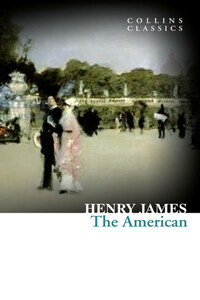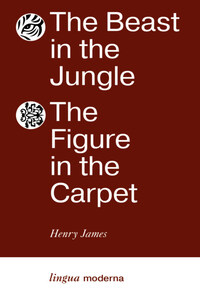âThe Portrait of a Ladyâ was, like âRoderick Hudsonâ, begun in Florence, during three months spent there in the spring of 1879. Like âRoderickâ and like âThe Americanâ, it had been designed for publication in âThe Atlantic Monthlyâ, where it began to appear in 1880. It differed from its two predecessors, however, in finding a course also open to it, from month to month, in âMacmillanâs Magazineâ; which was to be for me one of the last occasions of simultaneous âserialisationâ in the two countries that the changing conditions of literary intercourse between England and the United States had up to then left unaltered. It is a long novel, and I was long in writing it; I remember being again much occupied with it, the following year, during a stay of several weeks made in Venice. I had rooms on Riva Schiavoni, at the top of a house near the passage leading off to San Zaccaria; the waterside life, the wondrous lagoon spread before me, and the ceaseless human chatter of Venice came in at my windows, to which I seem to myself to have been constantly driven, in the fruitless fidget of composition, as if to see whether, out in the blue channel, the ship of some right suggestion, of some better phrase, of the next happy twist of my subject, the next true touch for my canvas, mightnât come into sight. But I recall vividly enough that the response most elicited, in general, to these restless appeals was the rather grim admonition that romantic and historic sites, such as the land of Italy abounds in, offer the artist a questionable aid to concentration when they themselves are not to be the subject of it. They are too rich in their own life and too charged with their own meanings merely to help him out with a lame phrase; they draw him away from his small question to their own greater ones; so that, after a little, he feels, while thus yearning toward them in his difficulty, as if he were asking an army of glorious veterans to help him to arrest a peddler who has given him the wrong change.
There are pages of the book which, in the reading over, have seemed to make me see again the bristling curve of the wide Riva, the large colour-spots of the balconied houses and the repeated undulation of the little hunchbacked bridges, marked by the rise and drop again, with the wave, of foreshortened clicking pedestrians. The Venetian footfall and the Venetian cryâall talk there, wherever uttered, having the pitch of a call across the waterâcome in once more at the window, renewing oneâs old impression of the delighted senses and the divided, frustrated mind. How can places that speak IN GENERAL so to the imagination not give it, at the moment, the particular thing it wants? I recollect again and again, in beautiful places, dropping into that wonderment. The real truth is, I think, that they express, under this appeal, only too muchâmore than, in the given case, one has use for; so that one finds oneâs self working less congruously, after all, so far as the surrounding picture is concerned, than in presence of the moderate and the neutral, to which we may lend something of the light of our vision. Such a place as Venice is too proud for such charities; Venice doesnât borrow, she but all magnificently gives. We profit by that enormously, but to do so we must either be quite off duty or be on it in her service alone. Such, and so rueful, are these reminiscences; though on the whole, no doubt, oneâs book, and oneâs âliterary effortâ at large, were to be the better for them. Strangely fertilising, in the long run, does a wasted effort of attention often prove. It all depends on HOW the attention has been cheated, has been squandered. There are high-handed insolent frauds, and there are insidious sneaking ones. And there is, I fear, even on the most designing artistâs part, always witless enough good faith, always anxious enough desire, to fail to guard him against their deceits.
Trying to recover here, for recognition, the germ of my idea, I see that it must have consisted not at all in any conceit of a âplotâ, nefarious name, in any flash, upon the fancy, of a set of relations, or in any one of those situations that, by a logic of their own, immediately fall, for the fabulist, into movement, into a march or a rush, a patter of quick steps; but altogether in the sense of a single character, the character and aspect of a particular engaging young woman, to which all the usual elements of a âsubjectâ, certainly of a setting, were to need to be super added. Quite as interesting as the young woman herself at her best, do I find, I must again repeat, this projection of memory upon the whole matter of the growth, in oneâs imagination, of some such apology for a motive. These are the fascinations of the fabulistâs art, these lurking forces of expansion, these necessities of upspringing in the seed, these beautiful determinations, on the part of the idea entertained, to grow as tall as possible, to push into the light and the air and thickly flower there; and, quite as much, these fine possibilities of recovering, from some good standpoint on the ground gained, the intimate history of the businessâof retracing and reconstructing its steps and stages. I have always fondly remembered a remark that I heard fall years ago from the lips of Ivan Turgenieff in regard to his own experience of the usual origin of the fictive picture. It began for him almost always with the vision of some person or persons, who hovered before him, soliciting him, as the active or passive figure, interesting him and appealing to him just as they were and by what they were. He saw them, in that fashion, as disponibles, saw them subject to the chances, the complications of existence, and saw them vividly, but then had to find for them the right relations, those that would most bring them out; to imagine, to invent and select and piece together the situations most useful and favourable to the sense of the creatures themselves, the complications they would be most likely to produce and to feel.














